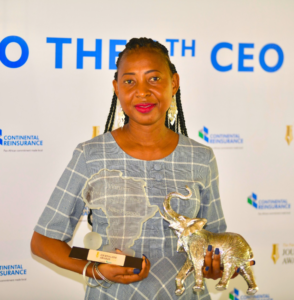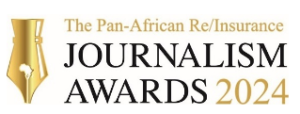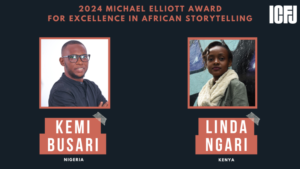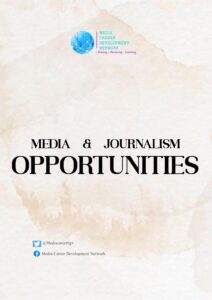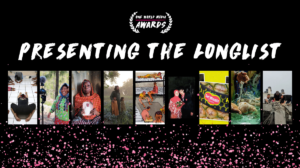Jude Nwabuokei of Radio One 103.5FM, Lagos in this reporter’s diary recalls how he won a fellowship programme for journalists organized by the United Nations Department of Public Information and his memorable professional experience in New York.
As a young broadcast journalist working in a Radio Station in a city like Lagos, there was a tendency for me to fall into the routine of working to survive or working to earn a meal ticket that could keep one from begging. However, I realized that anyone who had succeeded in anything at all was someone who deviated from the norm and deliberately decided to follow the footsteps of the greats.
One of those January evenings after a hectic day at work, I was going through different comments and timelines on facebook when I came across a link on a colleague’s timeline that referred to a fellowship programme for journalists being organized by the United Nations Department of Public Information. Since I was one who had a knack for exploring opportunities, I clicked on the link and saw that I met the requirements. The application process required that I submit three samples of reports I had done that were related to the United Nations Sustainable Development Goals (SDGs) as well as writing four essays, with the first focusing on the reason for applying for the fellowship.
About eight weeks later,I received an email from the Programme Coordinator, Mr Zvi Muskal, informing me that I had been shortlisted for a phone or skype interview. I opted for the phone interview since a skype call required data services that did not like the part of Lagos where I reside. After the phone interview, I did not hear from him again until the first week of May when I received an email informing me that I had been selected to participate in the programme in New York along with fourteen other journalists from developing countries and countries with economies in transition.
My joy knew no bounds. The realization that I was going to be in the United States to have a firsthand experience of their techno-savvy media was a big deal for me. Also, I was privileged to have a boss, Mrs Funke- Treasure Durodola whose international exposure and experience reflected in the way she steered the wheels of Radio One FM. Her mien, posture and confidence stemmed from the numerous trainings and experiences she had acquired mostly beyond the shores of Nigeria. She constantly hammered on the need for training and staff development especially during editorial meetings. This triggered the desire for international exposure in me.
When my feet stepped on the grounds of Manhattan, New York, it was a different ballgame entirely. The tall buildings, the road networks, the train stations, the yellow taxis, the newspaper vendors, yes vendors, the only difference is that they are much more polite and say something like “it’s your Metro News, read all about it” with that American accent that we all know too well, thanks to Hollywood! And of course, the coffee culture. Almost everyone walking the streets of Manhattan holds a coffee cup. Every morning at the subway greets you with the aromatic smell of coffee until you walk back to the streets where the coffee leaves your nostrils and goes back to the white plastic cups clutched by hands of different colours and sizes.
The United Nations building on 42nd Avenue was easy to locate because everyone knew it for obvious reasons, one of them being that at a certain time of the year, the weeklong General Assembly takes place and the New York Police Department NYPD barricades every street and avenue leading to the United Nations. This is due to the presence of various heads of states, ministers and ambassadors during this period.
The schedule for the programme was a very tight one with each day having its fair share of meetings, briefings, visits to various media houses like Bloomberg, Reuters, The New York Times, Associated Press, WNYC and a host of others. The newsrooms, conference rooms, and offices in general were impressive. One major feature of most of the places we visited was the recurring theme of transparency. Most were made of glass. It was a see-through affair. One that seemed to suggest the idea of nakedness or openness. The architecture brought the outside inside in a way that reinforced the media’s need to bring things out in the open. Anytime I went through these buildings, I constantly pondered on the media’s need to break the borders and boundaries of secrecy.
In the course of the programme, I worked on five stories which were focused on zero hunger, zero poverty, sustainable water supply, preservation of marine resources and sustainable cities and communities. Apart from these stories I worked on issues revolving around climate change in an interactive session I had with the Assistant Secretary General of the United Nations Environment Programme UNEP, Mr. Elliot Harris. While I was working on these stories, I realized that most Nigerians in New York are very informed on the state of affairs in the country. There was this high sense of patriotism that seemed to be fuelled by living in a multi-cultural environment. It suddenly reminded me of the state of J.S. Furnival that “people mix but do not combine”
All through the programme, different UN officials kept emphasizing the role of the media in achieving sustainable development. The briefings with the News and Media Division of the Department of Public Information at the UN Headquarters pointed that some of the successes the Millenium Development Goals MDGs recorded was due to the input of the media. Hence, the need for the media to do the same for the Sustainable Development Goals SDGs.
The most memorable aspect of the programme for me was sitting at the General Assembly hall with the heavy presence of heads of states and top government officials from various countries. Equally memorable was the side events that were running concurrently with the GA. Most of which were focused on several aspects of the SDGs including an event on climate change that was organized by the Nigerian Embassy.
On a lighter note, I would like to refer New York as an elevator. There is always the distinction between the uptown and the downtown part, depending on where you commence your movement. With the advent of google map or city mapper applications on smart phones, it is relatively easy to find your way around. I remember the first train ride I had on my way to Brooklyn from Manhattan. I was trying to figure out how to get to my destination when I realized that there was a map of the train’s route close to where I sat. From the information on the map, I knew I had to make a stop at Franklin Avenue to get to my temporary residence at Crown Street. When I eventually got to my destination, a friend who had been awaiting my arrival beamed with a smile said “Welcome to New York, the big apple’.
Jude is a reporter and producer with Radio One 103.5FM
